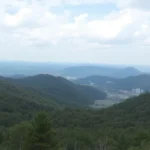30 Fascinating Facts About Berlin You May Not Know

- The Origins of the Berlin Wall: A Night to Remember
- The Human Cost of Division
- Checkpoints: The Gateway to the West
- The Fall of the Wall: A City Reunited
- The Urban Art Scene: A Double-Edged Sword
- Pop Culture and Historical Anecdotes
- Symbolism of the Bear
- A Museum Lover's Paradise
- Colorful Tubes: A Unique Urban Feature
- Capturing Memories: Photo Booths Galore
- John F. Kennedy's Famous Declaration
- The Bunker with a Dark Past
- Ampelmännchen: The Iconic Traffic Light Figure
- Canals and Bridges: A Waterway Wonderland
- A Culinary Hub for Kebab Lovers
- Currywurst: A Local Delight
- A Cosmopolitan Melting Pot
- Hitler's Disconnection with Berlin
- The Reichstag Fire: A Turning Point
- The Fernsehturm: A Tower of Irony
- A Reminder of War: Kaiser Wilhelm Memorial Church
- The Green Capital of Europe
- Tempelhof Park: From Airport to Urban Oasis
- Marking History: The Berlin Wall's Footprint
- The Mysterious Missing Numbers
- A Bicycle-Friendly City
- A Hub for Opera Lovers
- Dog-Friendly Culture
Exploring a city like Berlin is like unearthing layers of history, culture, and quirks that make it unique. Each corner tells a story, and each fact adds to its vibrant identity. Whether you’re planning a visit or just curious about this fascinating metropolis, here are 30 intriguing curiosities about Berlin that will surely ignite your wanderlust.
The Origins of the Berlin Wall: A Night to Remember
On the night of August 12-13, 1961, the Berlin Wall went up in a matter of hours. Initially a simple barbed wire fence, it quickly became a powerful symbol of division during the Cold War.
The wall was constructed not merely for ideological reasons, but also to prevent the mass exodus of East Germans to the West, where opportunities and freedoms were significantly greater.
The Human Cost of Division
Tragically, around 270 individuals lost their lives attempting to cross the wall. The first fatality, Peter Fechter, bled to death after being shot while trying to reach the West, highlighting the harsh realities of a divided city.
The story of these lives lost adds a somber layer to Berlin's history, reminding us of the struggles faced during a tumultuous period.
Checkpoints: The Gateway to the West
Throughout the wall's existence, there were three main checkpoints: Alpha, Bravo, and the notorious Checkpoint Charlie, which has since become a popular tourist attraction, offering a glimpse into the past.
Visiting Checkpoint Charlie today is a poignant reminder of the barriers that once separated families and friends.
The Fall of the Wall: A City Reunited
In November 1989, the wall came crashing down thanks to the collective will of the people. The East Side Gallery remains today as the longest open-air gallery in the world, showcasing murals and graffiti that celebrate freedom and unity.
This vibrant display of art serves not only as a testament to resilience but also as a canvas for expression in a city that embraces creativity.
The Urban Art Scene: A Double-Edged Sword
Berlin is famous for its street art, yet the local government spends approximately €35 million annually on restoring buildings defaced by this vibrant expression. This ongoing battle reflects the city’s complex relationship with art and heritage.
Despite the costs, many locals and visitors cherish the gritty charm that urban art brings to the city's landscape.
Pop Culture and Historical Anecdotes
In a memorable moment during New Year’s Eve 1989, David Hasselhoff performed "Looking For Freedom" in Berlin, unwittingly caught in a chaotic celebration that he described as unforgettable.
His performance became emblematic of the spirit of the time, blending pop culture with a significant historical moment.
Symbolism of the Bear
The bear is Berlin's symbol, possibly linked to the word "Bär," meaning bear in German. This playful connection adds a quirky charm to the city’s identity, representing strength and tenacity.
A Museum Lover's Paradise
Berlín boasts around 180 museums, many located on the UNESCO-listed Museum Island. From art to history, there’s a diverse array of exhibitions to explore.
- Visit the Pergamon Museum for ancient artifacts.
- The Jewish Museum offers a profound insight into Jewish history in Germany.
- Berlin's Natural History Museum houses impressive dinosaur skeletons.
Colorful Tubes: A Unique Urban Feature
In recent years, colorful tubes have become a distinctive sight in Berlin. Designed to manage stormwater drainage, these vibrant installations not only serve a practical purpose but also add a whimsical touch to the cityscape.
Pink was chosen as the primary color, aiming to attract children’s attention while brightening urban environments.
Capturing Memories: Photo Booths Galore
Throughout the city, you’ll find photo booths that offer a nostalgic experience—four black-and-white snapshots that serve as perfect souvenirs of your time in Berlin.
John F. Kennedy's Famous Declaration
During his visit in 1963, President John F. Kennedy famously declared, “Ich bin ein Berliner!”—a phrase that was humorously misinterpreted by some as referring to a jelly donut rather than a citizen of Berlin.
This moment remains a light-hearted anecdote in the serious context of Cold War tensions.
The Bunker with a Dark Past
The bunker where Hitler allegedly committed suicide is now a parking lot, a stark contrast to the dark history that unfolded within its walls.
This transformation reflects Berlin’s ability to confront its past while moving forward.
Ampelmännchen: The Iconic Traffic Light Figure
The Ampelmännchen, the beloved figure seen on traffic lights, nearly faded into obscurity. Fortunately, public advocacy preserved this quirky icon, which represents the city’s identity and nostalgia.
Canals and Bridges: A Waterway Wonderland
Berlin is crisscrossed with 180 kilometers of navigable canals, boasting more bridges than Venice, Amsterdam, and Stockholm combined. Exploring these waterways offers a unique perspective on the city.
A Culinary Hub for Kebab Lovers
The city is known for its large Turkish immigrant community, leading to an astonishing consumption of 60 tons of kebabs daily. If you love kebabs, Berlin is the place to indulge!
Currywurst: A Local Delight
Don’t miss trying the currywurst, a delicious sausage smothered in curry ketchup. This street food favorite is a must-try for any visitor.
A Cosmopolitan Melting Pot
Berlin is one of Europe’s most cosmopolitan cities, with residents from over 180 different countries. This diversity enriches the cultural fabric and makes for a vibrant community.
Hitler's Disconnection with Berlin
Interestingly, Hitler struggled to connect with the city’s diverse culture, aiming to alter its character by enforcing strict ideologies. This historical context adds depth to our understanding of Berlin's evolution.
The Reichstag Fire: A Turning Point
The Reichstag fire in 1933 was a pivotal moment, as Nazis used it to justify political repression against communists. This event marked the beginning of a dark chapter in German history.
The Fernsehturm: A Tower of Irony
The iconic Fernsehturm (TV Tower) was built in East Berlin to showcase the strength of communism. Ironically, sunlight reflecting off its dome often creates a cross shape, a phenomenon dubbed the "Pope’s Revenge." This playful twist of fate highlights the complexities of Berlin's history.
A Reminder of War: Kaiser Wilhelm Memorial Church
After the devastation of World War II, Berlin decided to leave the Kaiser Wilhelm Memorial Church in its damaged state as a memorial, a poignant reminder of the war's impact.
The Green Capital of Europe
With a quarter of its area dedicated to green spaces, Berlin is one of Europe’s greenest capitals. Parks and gardens provide a lovely escape from urban life. Explore them to experience the city's natural beauty.
Tempelhof Park: From Airport to Urban Oasis
Tempelhof Park, once an airport, is now a vast recreational area where locals and tourists can jog, skate, and enjoy picnics on what used to be a runway.
Marking History: The Berlin Wall's Footprint
Looking for the former location of the Berlin Wall? Watch your step! A double row of cobblestones often marks its path, accompanied by plaques that read “Berliner Mauer 1961-1989.”
The Mysterious Missing Numbers
As you stroll along Kurfürstendamm, you might notice the absence of storefronts numbered 1 to 10. This quirky detail adds a touch of mystery to the city’s famous shopping street.
A Bicycle-Friendly City
Berlin is a cyclist’s paradise, with hundreds of kilometers of bike lanes. It’s truly a bike-friendly city, although the chilly winters pose a challenge for cyclists!
A Hub for Opera Lovers
Berlin is one of the few cities worldwide with multiple opera houses: the Berliner Staatsoper, Deutsche Oper Berlin, and Komische Oper, offering a rich cultural experience for enthusiasts.
Dog-Friendly Culture
Berlíners love their dogs, with over 100,000 canines living in the city. You’ll see many dogs accompanying their owners in cafes and parks, reflecting the city’s pet-friendly vibe.
These 30 curiosities about Berlin enhance your understanding of this complex and intriguing city. From its tumultuous history to its vibrant present, Berlin continues to captivate the hearts of those who visit.
A few tips for your journey:
| Save on your trip |
| Find cheap flights here |
| Book accommodation at the best prices here |
| Reserve activities and tours in Spanish here |
| Get a 5% discount on your IATI travel insurance here |
| Book transfers from the airport here |
| Receive a gift of €10 when booking transport across Europe here |
| Learn how to withdraw cash without fees here |
| Get a 5% discount on your eSIM from Holafly here |
| Rent a car with the best deals here |
| Compare prices for van rentals here |
| Find the best books and travel guides here |
| Check out all our articles about Berlin |




Deja una respuesta